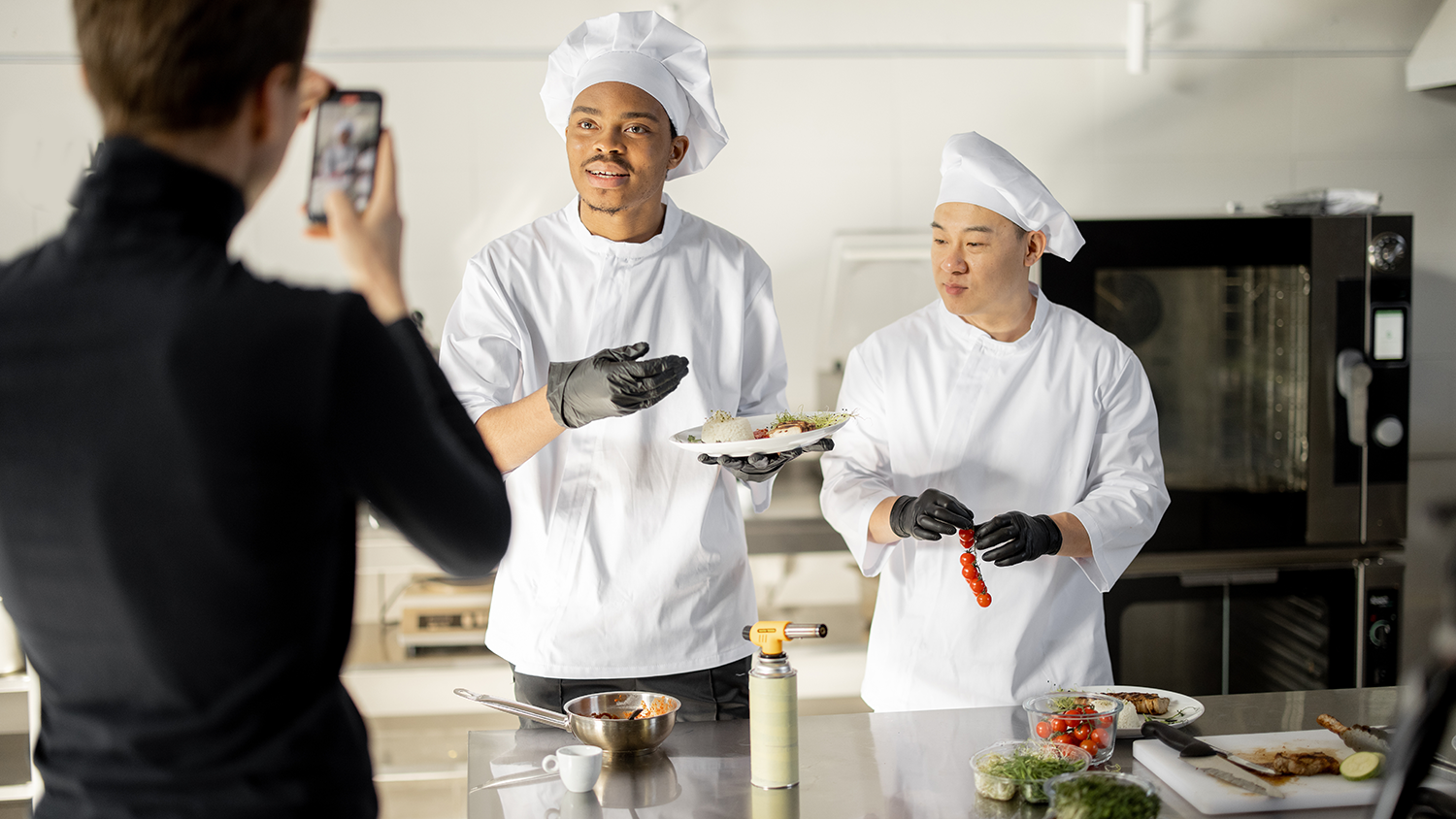By Aida Grigoryan, Contributor
Running a restaurant business is not just about selling high-quality meals anymore. In a study conducted by CNBC, it was found that the failure rate of restaurants in the first year of operations is 60%. This is because running a restaurant business forces you to understand interweaving systems and processes that need to run smoothly to enable you to sell high-quality products in a friendly service consistently.
Generating sales is just one portion of the pie that you need to look into, but at the end of the day, it is still the bottom line that matters. All the costs incurred in your business, from delivery of goods to labor costs, can all affect the overall profitability of your business. Costs can either help you keep your business afloat or it can lead you to file for bankruptcy. But how do you know if the costs incurred by your restaurants are justifiable or not? This is where variance reports analysis comes in to help you.
Variance is simply the difference between the expected output and the actual output. It can refer to different aspects but in restaurant operations, it is usually about sales variance, food cost variance, inventory variance, and even labor cost variance. These variance reports are generated by a system that compares the theoretical number that can come from standards, targets, or recipes you have previously set, to the actual number after a sales period.
Restaurants usually analyze variance reports every two weeks or every month. Knowing how to analyze variance reports can give you meaningful insights that can translate to actionable recommendations.
Sales Variance Report to Increase Sales Target
Sales variance is the difference between your forecasted sales and the actual sales during a period. The forecasted sales can come from previous sales data that you can extract from your POS. It can also be adjusted if you will run a promotion or if there is a local community festival or if there is a new competitor in your area that may cannibalize your sales.
If your restaurant’s sales variance is positive, it means that your actual sales are higher than your forecasted sales. When this happens, you should then adjust your sales target for the next period so that the restaurant team will aim for higher sales achievement. If you have a negative sales variance, it means that your actual sales are lower than your forecasted sales. When this happens, you should do a root-cause analysis.
You may use the following questions to probe:
Did you have the right manpower and inventory to achieve the forecasted sales?
Were there changes in the neighborhood that could have affected your sales achievement?
This information will help you do a better forecast and preparation for the next period.
For instance, your forecasted sales for the month of June is $15,650.00 but your actual sales is just $10,890.00, your sales variance is -43%.
Because this is an alarming variance, you now need to understand the root cause of this variance. If there were no changes in your trade area, you may need to dig deeper. To verify if the sales variance is not from employee negligence, you may check the CCTV footage for days with unusual sales. You can also use the reports from aggregators and check if they tally with your sales reports.
Food Cost Variance Report to Improve Profitability
Food cost variance is the difference between the theoretical food and the actual food cost during a given period. Theoretical food cost is based on the recipe list of all the items you sold during this period. If you do not know how much it takes to produce a single menu item, you would not be able to use the correct selling price that will allow you to generate profit. While the actual food cost is the total inventory cost incurred in producing those items.
If you have a positive food cost variance, it means that the actual food cost is higher than the theoretical food cost. This may mean that you are using more ingredients than you should be or that the food wastage is high or that some inventory items are lost and unaccounted for.
If you have a negative food cost, it means that the actual food cost is lower than the theoretical food cost. While it may seem that this is good news, you still have to check if your staff is following the correct ingredients portion because you may be serving substandard food items to your customers.
Let’s use a fictitious restaurant called HoneyWell Restaurant specializing in pizzas and pasta. HoneyWell sold 10 pepperoni pizza, 3 chicken alfredo pasta, 2 margherita pizza, and 8 asian-style pasta for their soft opening day. The recipe costs are as follows, pepperoni pizza- $12.50, chicken alfredo - $8.75, margherita pizza - $10.00, and asian-style pasta-$11.25. The actual food cost declared by the shift manager is $285.15.
HoneyWell incurred a food cost variance of 8.36%. To address this, the restaurant manager will check if correct recipes and portioning tools were used during the soft opening. The restaurant manager can use the variance report to identify the ingredients causing the variance and advise the kitchen staff of the next shift to be mindful of the portioning of ingredients.
In your restaurant, you can implement frequent physical counting of available ingredients to address any leakage as early as possible. You may also compare the cost of raw materials and ingredients from other suppliers to check if your supplier is overcharging you. To address this, set an allowable positive or negative variance so that your restaurant manager will have a target food cost to achieve in a given period.
Inventory Variance Report to Achieve Positive Customer Experience
Inventory variance is the difference between the theoretical usage and actual usage of your inventory items. It may include packaging items, cutlery, condiments, or any item that you need to use to service your customers.
If you have a positive inventory variance, it means that actual usage is higher than theoretical usage. You may need to check if the correct packaging SKUs are used by your staff or if there are packaging items that were damaged and thrown away. If you have a negative inventory variance, it means that the actual usage is lower than the theoretical usage.
Here is an example to discuss how the inventory cost variance is applied in a restaurant setting:
If your beginning inventory, which is based on the ending inventory yesterday, for ketchup is 200 cases and you had a delivery of 5 cases within the day. One case amounting to $24.50 was accidentally dropped by your staff during the shift. At the end of the day, the manager did a physical count and the ending inventory is 132 cases. During the shift, one of your staff was strictly monitoring the usage of ketchup and recorded that 65 cases were used.
In this example, the theoretical count is 72 cases but the physical count was only 65 cases. You may need to check CCTV footage to track where the missing seven cases, amounting to $171.50 have gone.
In your restaurant, you may need to check if the correct issuance of cutlery and condiments is given to your customers. A positive or a negative inventory variance has a direct impact on your customer experience. Guests remember if a certain restaurant has a missed out on cutlery and condiments on their past transactions. That's why you need to track your inventory variance and similar to the food cost variance, it is advisable to set an allowable positive and negative variance that your restaurant manager needs to achieve.
Labor Variance Report to Maintain Productivity
Labor variance is the difference between the theoretical man-hours and actual man-hours rendered during a period.
If you have a positive labor variance, it means actual man-hours are higher than theoretical manhours. If you have a negative labor variance, it means that the actual man-hours are lower than theoretical manhours. You may refer to the shift schedule and attendance tracker to check if your staff is doing overtime work or leaving work earlier than they should be.
Here is an example to discuss how the labor variance is applied in a restaurant setting:
The theoretical man-hours of BlueDiamond Eatery for the first week of September is 560 man-hours. This is based on the schedule created by the shift manager. There will be 10 full-time staff members working for 8 hours a day for 7 days. Based on the attendance tracking, the actual man-hours logged is 660 man-hours.
Because of this 15.15% variance or 100 man-hours, you need to investigate if some of your staff members did overtime work. You may also verify this by reviewing the CCTV footage for the period covered in the reports to check if all employees were working during their shift. It may also be because of a glitch in the timekeeping system.
In your restaurant, you always have to ensure that your staff is not overmanned to lessen unnecessary costs or undermanned to maintain their productivity. Having optimal manpower during your operating hours will allow you to do more transactions while maintaining exceptional service.
Automate Your Restaurant Data
If you are still using manual consolidation of your restaurant business data, you may want to upgrade to a system from a reputable software supplier that can automate your management systems and generate reports that can improve your operations. Using Excel templates to track your usage and sales can be cheaper than investing in software, but you are missing out on the functions that cannot be run in excel. You are also doing administrative work that can be automated and will provide data that can be used in strategic decisions.
Variance can also come from using outdated Excel sheets being used by restaurants. Some SKUs are still used in an Excel file but the actual SKU has not been used in a long time. When analyzing which software supplier should you choose to partner with, always check if the software is fully integrated into your POS, accounting, and vendor’s system to ensure end-to-end accuracy in the reports that you will generate and analyze.
Just imagine how powerful all your historical data are. By using an innovative system, you can easily generate reports using your mobile phone or your computer. There is no need to ask your shift manager to send you reports because everything is stored in the cloud that can be accessed anywhere as long as there is an internet connection.
Conclusion
The primary objective of using different variance reports in restaurants is to improve your overall operations and profitability. There is a saying that you cannot improve what you cannot measure. With these reports, you can now measure costs more efficiently and even do a root-cause analysis on different aspects of your business. It will allow you to create data-driven recommendations and solutions that will be more effective than gut-feel solutions that are usually implemented by restaurant owners. You can effectively plan your manpower and inventory to achieve your sales target in a given period. With an effective management system and application, you can generate various variance reports that will help you run your business smoothly. These tools provide you with meaningful insight that can help your restaurant generate more sales and become more profitable.
About the Author
Aida Grigoryan is a content writer and content marketer who writes on SaaS and eCommerce marketing. She has contributed to 30+ publications with her articles and guides. The content she writes helps SaaS & eCommerce companies get better at promoting their products.
























